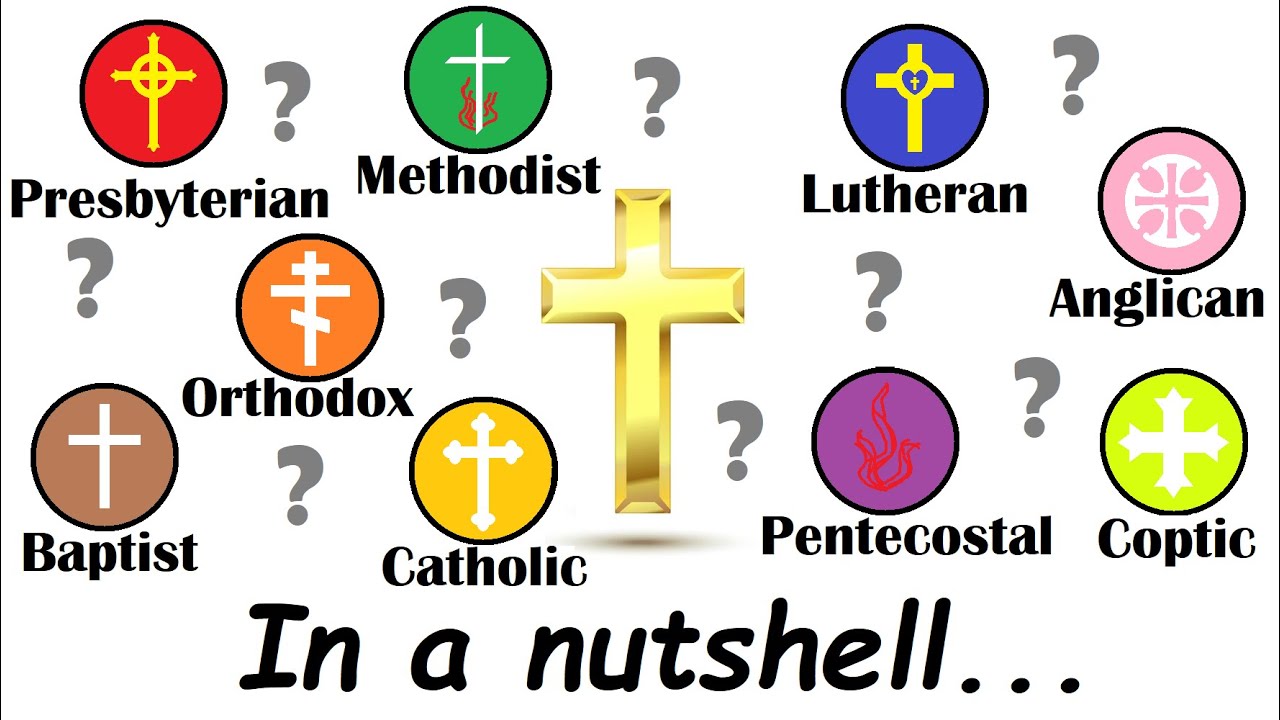Miaphysite Vs. Monophysite: Are the Oriental Orthodox Heretics?
Summary
TLDRThe discussion explores theological differences between the Eastern Orthodox and Oriental Orthodox churches, particularly around Christology and the interpretation of Christ's nature. The dialogue highlights misconceptions, emphasizing the importance of understanding and respect between traditions. Scholars like Christine Sho and church leaders recount past ecumenical dialogues that revealed more common ground than expected. The conversation also clarifies terms like 'monophysitism' and 'miaphysitism,' stressing that both traditions reject heresies and share a commitment to proper theology, fostering unity.
Takeaways
- 🌸 There is a strong emphasis on unity and dialogue between different Christian traditions, particularly the Eastern Orthodox and Oriental Orthodox churches.
- 💬 The importance of understanding and respecting each other's beliefs instead of making assumptions is highlighted.
- 🔍 The discussion delves into the theological differences between these churches, specifically around Christ's nature and the terminology used at the Council of Chalcedon.
- 📚 Christine Sho explains that both theological perspectives—those from Chalcedon and non-Chalcedonian traditions—can be reconciled if properly understood.
- 🕊️ Saints and their virtuous lives are viewed as a shared point of reference and respect across these theological divides.
- 📖 The term 'Mia Physis,' which originated from St. Cyril of Alexandria, refers to Christ's united divine and human nature in a non-confused and inseparable manner.
- 🤝 Historical dialogues, such as those facilitated by the World Council of Churches (WCC), have helped theologians from different traditions realize they share more common ground than initially assumed.
- 🧠 Father Anthony's anecdote about his experiences in ecumenical dialogues reveals that open conversations can often overturn deeply held assumptions.
- ⚖️ Both Eastern and Oriental Orthodox churches reject monophysitism, which is the belief that Christ's divinity absorbed his humanity, leaving him with only one nature.
- 🙏 The conversation emphasizes the need for humility, open-mindedness, and theological clarity when discussing complex issues of faith.
Q & A
What is the main purpose of the discussion in the transcript?
-The main purpose of the discussion is to explore the theological differences and similarities between Eastern Orthodox and Oriental Orthodox Christians, particularly concerning Christology, and to promote unity and understanding between the two traditions.
Why is it important to ask believers directly about their beliefs, according to the transcript?
-It is important to ask believers directly about their beliefs to avoid misunderstandings and incorrect assumptions. The transcript emphasizes that dialogue and understanding are crucial to accurately represent what a group of believers genuinely believes.
What was the reaction of Father George Dragas and Father John Romanides when they began dialogue with the Oriental Orthodox?
-Father George Dragas and Father John Romanides were initially skeptical but were shocked and intrigued when they discovered that the Oriental Orthodox held beliefs about Christ’s divinity and humanity that aligned with their own, contrary to their expectations.
What theological term is central to the discussion and often misunderstood, according to Christine Sho?
-The theological term central to the discussion is 'Mia physis,' which refers to the 'one nature' of Christ, as explained by Cyril of Alexandria. This term is often misunderstood as 'monophysitism,' but it actually encompasses both the divine and human natures in a unified, inseparable way.
How does the transcript define 'monophysitism,' and why is it considered heretical?
-Monophysitism is defined as the belief that Christ's divinity swallowed up his humanity, leaving only one nature. It is considered heretical because it denies the coexistence of both Christ's divine and human natures, a belief condemned by both the Eastern Orthodox and Oriental Orthodox churches.
What are the 'four adverbs' mentioned, and why are they significant in the discussion?
-The 'four adverbs' are 'without confusion, without change, without separation, and without division.' They are significant because they clarify and balance the understanding of Christ's dual nature, preventing misunderstandings and serving as common ground for reconciliation between the two traditions.
Why do some theologians believe that the differences between Eastern Orthodox and Oriental Orthodox are more about semantics than theology?
-Some theologians believe that the differences are more about semantics because the core beliefs about Christ's dual nature are fundamentally the same, but different terminologies and formulations have led to misunderstandings. Proper understanding and explanation of these terms can show that both traditions essentially agree.
How does the transcript describe the influence of St. Cyril of Alexandria on the Oriental Orthodox Church's christology?
-The transcript describes St. Cyril of Alexandria as a foundational figure for the Oriental Orthodox Church's christology. His teachings, particularly the concept of 'Mia physis' (one nature), form the basis of their understanding of the unity of Christ’s divine and human natures.
What was the initial attitude of some participants towards the dialogue at the World Council of Churches (WCC), and how did it change?
-Initially, some participants, like Father George Dragas and Father John Romanides, had no hope for meaningful dialogue at the WCC and expected only superficial diplomacy. However, their attitude changed when they discovered significant theological commonalities with the Oriental Orthodox, leading to a more fruitful and enthusiastic engagement.
Why is the recognition of both formulations of St. Cyril and the Council of Chalcedon important in the dialogue between the two traditions?
-Recognizing both formulations is important because it helps to reconcile the differing terminologies and emphasizes that both traditions ultimately share the same faith in the unified divine and human natures of Christ. This mutual recognition can pave the way for greater unity and understanding between the Eastern Orthodox and Oriental Orthodox churches.
Outlines

此内容仅限付费用户访问。 请升级后访问。
立即升级Mindmap

此内容仅限付费用户访问。 请升级后访问。
立即升级Keywords

此内容仅限付费用户访问。 请升级后访问。
立即升级Highlights

此内容仅限付费用户访问。 请升级后访问。
立即升级Transcripts

此内容仅限付费用户访问。 请升级后访问。
立即升级浏览更多相关视频

Eastern Orthodoxy: Why Not?

Speakers Corner - Muslims Bring Sneako To The Park to Embarrass Himself, He Knows Nothing, ft Ananda

Catholic vs Orthodox - What is the Difference Between Religions?

Cliffe & Stuart Knechtle vs. Ethiopian Orthodox Deacon Mihret Melaku: Harvard University Debate #fyp

Brief History of Christianity

All Christian denominations explained in 12 minutes
5.0 / 5 (0 votes)
